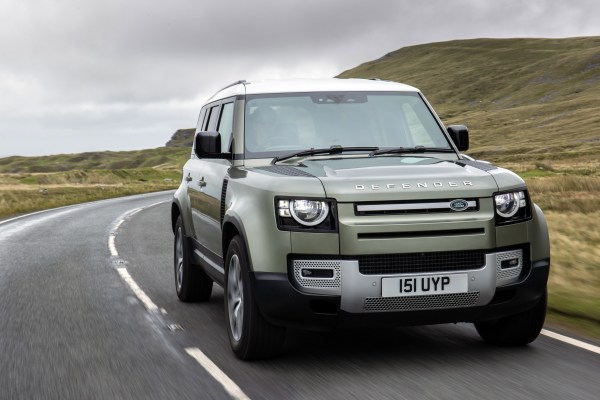Products You May Like
Jaguar Land Rover is developing a hydrogen fuel cell vehicle based on the new Defender SUV, and plans to begin testing the prototype next year.
The prototype program, known as Project Zeus, is part of JLR’s larger aim to only produce zero-tailpipe emissions vehicles by 2036. JLR has also made a commitment to have zero carbon emissions across its supply chain, products and operations by 2039.
Project Zeus is partially funded by the U.K. government-backed Advanced Propulsion Center. The automaker has also tapped AVL, Delta Motorsport, Marelli Automotive Systems and the U.K. Battery Industrialization Center to help develop the prototype. The testing program is designed to help engineers understand how a hydrogen powertrain can be developed that would meet the performance and capability (like towing and off-roading) standards that Land Rover customers expect.
Fuel cells combine hydrogen and oxygen to produce electricity without combustion. The electricity generated from hydrogen is used to power an electric motor. Some automakers, researchers and policymakers have advocated for the technology because hydrogen-powered FCEVs can be refueled quickly, have a high-energy density and don’t lose as much range in cold temperatures. The combination means EVs that can travel longer distances.
Few fuel cell EVs, otherwise known as FCEVs, are on the market today in part because of a lack of refueling stations. The Toyota Mirai is one example.
Data from the International Energy Agency and recent commitments by automakers suggests that might be changing. Last month, BMW Chairman Oliver Zipse said the automaker plans to produce a small number of hydrogen fuel-cell powered X5 SUVs next year.
The number of FCEVs in the world nearly doubled to 25,210 units in 2019 from the previous year, the latest data from the IEA shows. The United States has been the leader in sales, although there was a dip in 2019, followed by China, Japan and Korea.
Japan has been a leader on the infrastructure end as it aims to have 200,000 FCEVs on the road by 2025. The country had installed 113 stations as of 2019, nearly twice as many as the United States.
“We know hydrogen has a role to play in the future powertrain mix across the whole transport industry, and alongside battery electric vehicles, it offers another zero tailpipe emission solution for the specific capabilities and requirements of Jaguar Land Rover’s world class line-up of vehicles,” Ralph Clague, the head of hydrogen and fuel cells for Jaguar Land Rover said in a statement.
